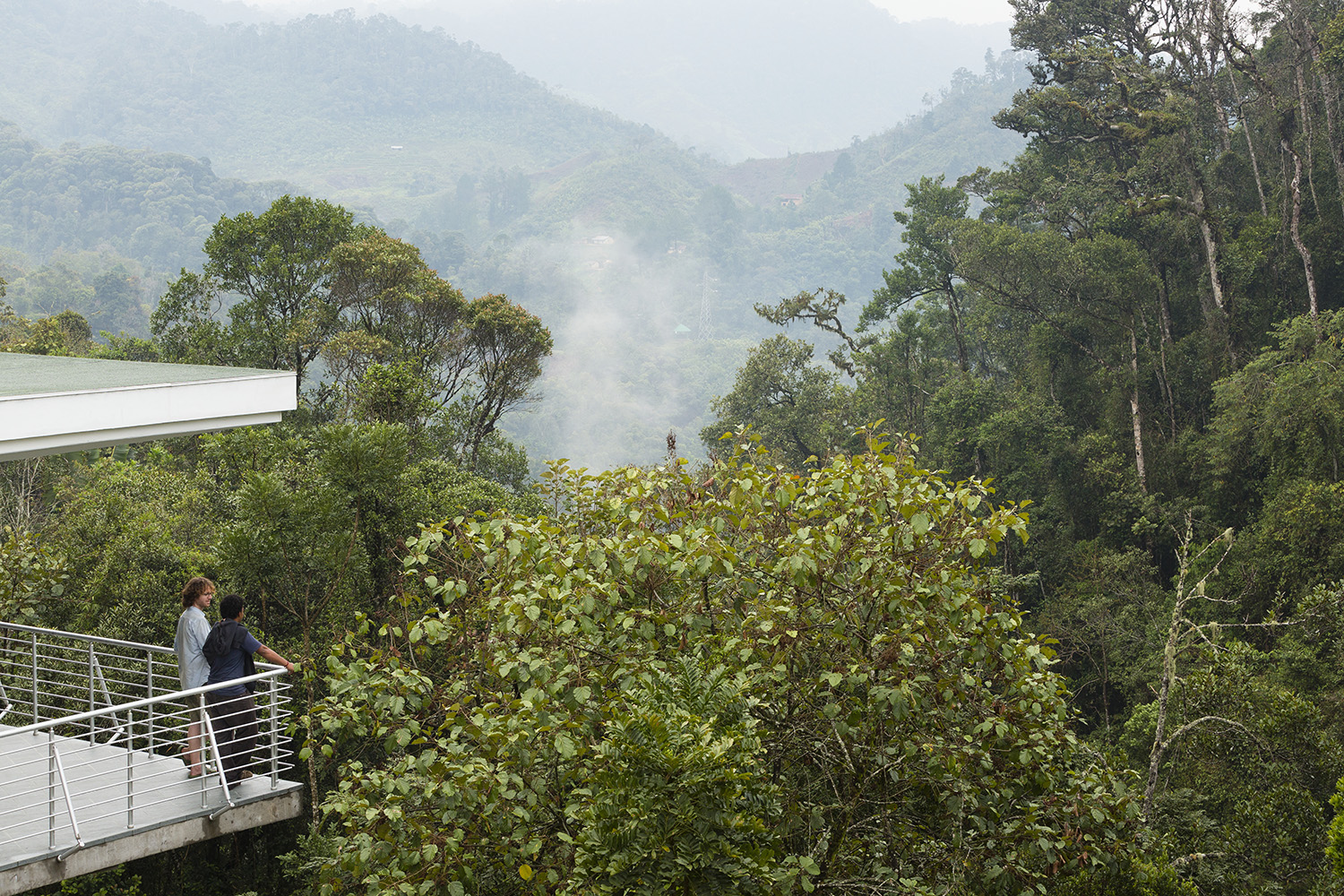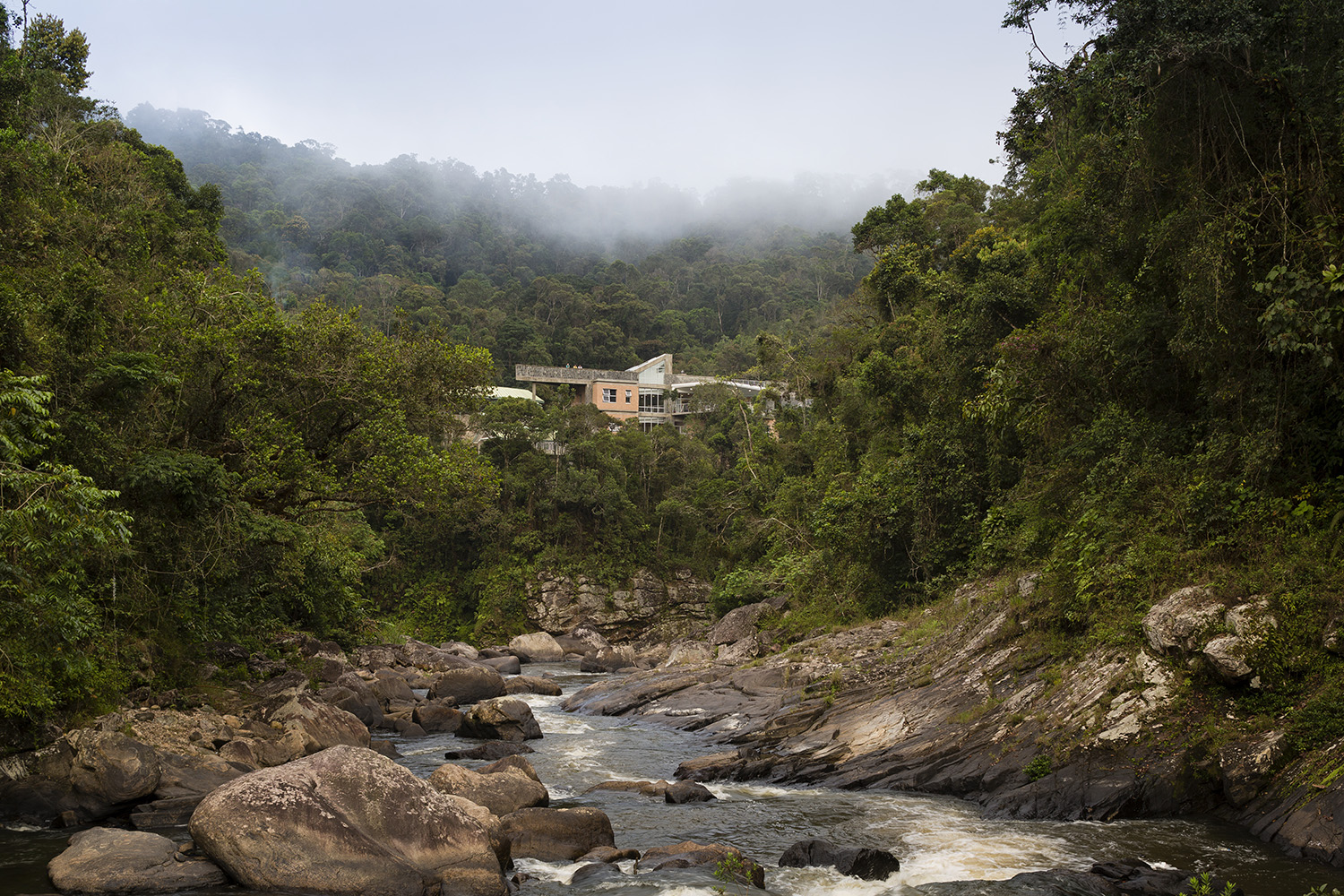Nature Center With A Mission
I just came back from seeing Madagascar, and I don’t mean the newly-released movie of the same name.
The real Madagascar is a stunningly beautiful island that drifted away from other land masses 160 million years ago. Its isolated evolution means that almost all of Madagascar’s reptile and amphibian species, half of its birds, and all of its lemurs can be found nowhere else on earth. All told, 20% of the planet’s primate species are found only here.
The rainforests that support much of this diversity, however, have been losing the battle against human development and survival. Less than 5% of the original deciduous rainforest that once existed is now left.
As I rode down the windy, narrow main route from the capital city of Antananarivo, I was taken by the sublime beauty of the landscape –hillsides stepping down in terraces carved from the clay soil, peaks capped by raw granite outcrops. Only after driving for hours through the largely treeless landscape did the obvious strike me – I was traversing former rainforest.
The crisis – and the urgency to study and draw global attention and research to this biodiversity hotspot before it’s lost – is acute. One of the people rising to meet this challenge is Dr. Patricia Wright, a Lyndonville native and accomplished primatologist from Stony Brook University who has spent 26 years studying lemurs, and becoming a conservationist by necessity. When Dr Wright realized she was discovering both new species and species believed extinct – in forest land that was being illegally logged – she lobbied for the creation of Ranomafana National Park. She then worked to establish a permanent research station on the edge of the park, with facilities to attract researchers and study-abroad students.
In 2006 Dr. Wright was given my firm’s name – I presume as architects who might just be crazy enough to help in her quest to add a world-class research/outreach building and residence hall to this outpost campus.
And so this is where architecture enters into the storyline. It is only the stage set, a bit player in a much larger drama, but still I don’t think I could dream up a better example to illustrate how and why design matters.
We looked for common ground. The mandate to build sustainably and the goal to preserve biodiversity each have their origins in a deep respect for the fragility of the natural world, understanding of our place in it, and belief in the possibility of making a difference. That difference is made one National Park at a time, one species at a time, one building at a time.n this case the resulting building, NamanaBe (Friendship) Hall, illustrates architecture’s role in furthering a conservation, nature-centered agenda. It isn’t in the Genesee Valley, but in designing a Nature Center here, you might ask some of the same questions. After all, how do you translate a conservation ethic into architecture? How can a building’s design contribute to such ambitious goals as preserving biodiversity? This was where we started.
In all this, architecture has a part to play. In our case, the Institute’s program places students and researchers within Madagascar’s rich yet threatened ecosystem. We wanted it to be in a building from which they might develop first-hand, career-influencing experiences, profound insights, and a deep and enduring respect for what remains of the natural world.
Here are some guiding principles that would apply to a Nature Center here as well as in a rainforest half a world away:
First, respect the site. Let the place inform the architecture. For NamanaBe Hall, the only available, previously-disturbed ground was three stories below the road, and tapered. The building’s wedge-like form precludes the removal of any vegetation or modification of the existing sitework, and a footbridge links the road with the building’s public level entrance – which is the top floor! Once inside, the visitor is drawn through to a large veranda open to the spectacle of Ranomafana National Park. It is one of many outdoor spaces encouraging observation and communion with the rainforest.
Second, create social spaces. Design can encourage or discourage chance encounters. Beneath the public floor are the residence hall levels. The stairs that lead to them, and the central area around which sleeping rooms are (much as dwellings in local villages), encourage socializing and the sharing of knowledge. After all, this is a building teeming with “experts” in different areas of biodiversity studies who need opportunities to get to know each other in order to put all the pieces together.
Third, demonstrate conservation through design. A Nature Center is a delicate dance, since construction requires destruction, and housing a conservation agenda consumes energy and uses up materials.
How can a building reconcile that, strike a balance and perhaps teach its visitors what conservation means in architecture? In Madagascar, native materials and careful stewardship of resources are a necessity. The granite we used is local; the bricks are baked in roadside kilns by the farmers terracing the hills. The project additionally incorporates a habitable planted roof of native and medicinal plants, gray water recycling, solar hot water, natural cooling, and enhanced daylighting.
Fourth, plan for obsolescence. Let’s not design buildings that are so rigid in their design that when their mission changes they must be destroyed or abandoned. In our case, most of the separating partitions are non-load bearing – essentially brick “curtains” that can be reconfigured if, for example, a residence hall floor needs to be converted to a health clinic, or an interpretive museum for eco-tourists.
A Nature Center in Western New York would look very different. Its materials, its form, and the way it interacts with its place should, by necessity, be in response to its own environmental conditions. But the imperative for design to address all these issues and to amplify and frame visitors’ experience of nature is the same, whether here or half a world away.
***






